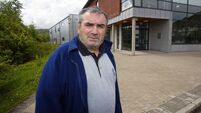Battle to prevent meltdown could take weeks, says US
Gregory Jazcko, speaking in Washington DC, said that radiation levels around the cooling pool were extremely high, posing deadly risks for workers racing against time to contain the damage caused by an earthquake and a tsunami.
“It would be very difficult for emergency workers to get near the reactors. The doses they could experience would potentially be lethal doses in a very short period of time,” he said.












